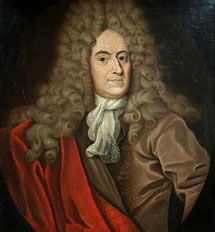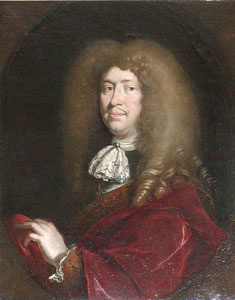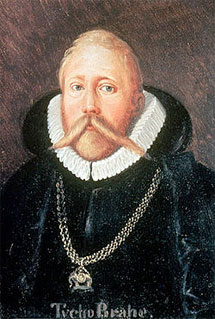Ole Rømer´s education
Ole Christensen Rømer was born on the 25 September 1644. He was the son of the merchant Christen Pedersen and his wife Anne Olufsdatter Storm, who was the daughter of a well-known Aarhusian alderman. Christen Pedersen, who came from Rømø, took Rømer as his new surname when he moved to Aarhus in 1642, to stand out from his namesakes in the city.
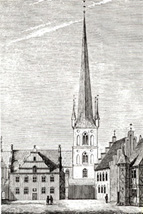
The University of Copenhagen is Denmark’s oldest. It was founded in 1479. Here is a reconstruction of the neighbourhood around the Church of Our Lady (Vor Frue Kirke) in Rømer’s time.
Christen Pedersen was interested in navigation and owned a number of nautical instruments and books, which awakened Ole Rømer’s interest in astronomy. In 1662, Ole Rømer graduated from Aarhus Cathedral School and moved to Copenhagen in the same year to study at the University of Copenhagen. Here he had the scientist and physician as a teacher, which was decisive for his future career.
Tycho Brahe’s observations
In 1655, the Danish King Frederik III, who was very interested in science, bought Tycho Brahe’s original observations from Johannes Kepler’s son, and in 1664 Bartholin received the orders to publish them. They had never been published before and therefore had to be put in order and transcribed so that they were readable. Even though Rømer had only studied for two years, he became Bartholin’s assistant in the laborious editing work. Tycho Brahe’s great observational material, which the world’s most accurate of his time, gave Ole Rømer the best possible introduction to astronomical observations. Unfortunately, the publication of Tycho Brahe’s life’s work was abandoned upon the death of Frederik III in 1670, and it was only in 1923 that the observations were published in Copenhagen.

A portion of the first page of Ole Rømer’s transcription Tycho Brahe’s observations from 1581. Click on the image to see the entire page.
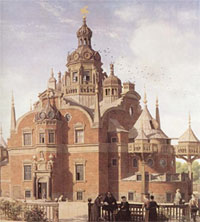
Uranienborg was Tycho Brahe’s home and observatory on the island of Hven in Øresund. The island was given to Tycho Brahe by Frederik II for the express purpose of studying the stars. Uranienborg was built in the year 1580, but Christian IV allowed it to be torn down in 1601. When Jean Picard arrived in 1671, he was very shocked to find that the land was being used as a landfill.
Uranienborg’s precise placement
In 1671 the French astronomer Jean Picard came to Denmark to make a precise measurement of the position of Tycho Brahe’s old observatory, Uranienborg, on the island Hven, where he had made all of his observations. By measuring the position of Uranienborg in relation to the new observatory, the Paris Observatory, which was under construction in Paris, Tycho Brahe’s observations could also be used there. Rasmus Bartholin and Ole Rømer travelled with Jean Picard to Hven to help him with the measurements.
Ole Rømer’s stay on Hven gave him experience with the practical side of astronomy, as he had to make numerous measurements with telescopes and instruments. This, combined with the theoretical experience he had through the work with Tycho Brahe’s observations, made him an accomplished scientist. During the stay on Hven, Jean Picard was very excited about Ole Rømer, and he received permission from the King to take Rømer to Paris, when he returned there in the spring of 1672. Here Ole Rømer was the assistant to Giovanni Cassini at the Paris Observatory, where they specialized in more and more precise measurements of the orbits and eclipses of the moons of Jupiter. Ole Rømer was living at the Paris Observatory, and he quickly became a member of the prestigious Académie Royale des Sciences, which was founded in 1666.
|
|
|
|

